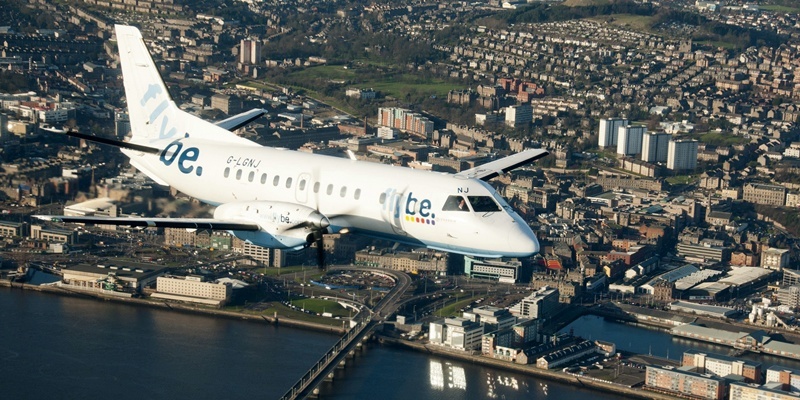Scottish airline Loganair celebrated its 50th anniversary this week.
The Glasgow-based airline, which now operates scheduled services under the Flybe franchise in mainland Scotland and to Orkney, Shetland and the Western Isles, and also to Belfast and Birmingham from Dundee, owes its existence to the Tay Road Bridge.
Willie Logan was managing director of Duncan Logan Ltd of Muir of Ord, which won the contract to build the crossing of the Tay estuary between Dundee and Fife. He used a Piper Aztec to fly managers and employees to the site from Edinburgh opening his eyes to the potential of an airline.
In the 1960s it could take three hours to drive from Edinburgh to Dundee, but the distance could be flown in just 15 minutes.
Loganair began life on February 1 1962, operating a number of regular and special charter services using a fleet of light aircraft. The small airline carried out maildrops to St Kilda, aerial photography, flying Littlewoods Pools coupons from Belfast to Glasgow and onwards to Liverpool and flying Logan Construction executives to temporary airstrips all over Scotland.
The Tay Road Bridge was completed in August 1966 but Willie Logan did not live to see it eight months earlier he died, aged 52, when his aircraft crashed near Inverness.
In October 1968 the airline was bought by the Royal Bank of Scotland, and three years later it was relaunched as a commercial airline operating scheduled services.
The first was in August 1971 between Dundee and Glasgow, with Loganair operating two daily flights in an eight-seat Brittan Norman Islander to Glasgow, connecting with services to London.
The 1971 timetable shows fares between Dundee and Glasgow were £4.40 one-way, with a 50% discount for children, and young persons’ and student fares were available.
Once it became possible to drive to Edinburgh Airport in just over an hour and catch a greater range of more competitively-priced flights south, the viability of the Dundee service suffered.
Continued…
The Glasgow-Dundee service ceased on May 30 1975, bringing Loganair’s involvement with Dundee to a temporary close.
There followed many changes at Loganair as the airline spread its wings further south, and began to operate its first jets.
Corporate restructuring at British Midland in the mid-1990s saw most of Loganair’s aircraft and routes transferred to other airlines and became a regional Scottish airline once again.
A management buyout, led by current chairman Scott Grier, took place in 1997 at which time the company operated services to Barra, where flights still land on the beach and timetables are subject to tide.
Loganair returned to Dundee on May 22 2008 with new services under its franchise agreement with Flybe, Europe’s largest regional airline.
It has carried more than 100,000 passengers on two flights each weekday and one on Sundays to Birmingham, with four to five flights each week to Belfast.
Loganair has 11 staff at Dundee, with the service being named the UK’s most punctual air service.
Loganair chairman Mr Grier emphasised the company’s revived Dundee presence at this week’s celebratons, saying he wants to build on the firm’s success since 2008.
He said: ”Loganair came into being because of the Tay Road Bridge and we have seen that project completed and seen the development of Riverside from the strip it used to be into the modern, efficient facility it is now.
”No one is immune from the economic pressures that exist and we aim to progress cautiously. Dundee is important to us and we hope to be able to build on what we have.”
Mr Grier was speaking from Glasgow Airport at the launch of a year-long celebration to mark the company’s 50 years as ‘Scotland’s airline’.
He said: ”No other airline has operated for nearly as long under its original name. During the lifetime of Loganair, at least 50 Scottish-based airlines and aviation companies have come and gone, but we’re still here and thriving.”
To commemorate the anniversary, the fleet is carrying a ‘Serving Scotland for 50 years 1962 to 2012’ logo featuring a Saltire and the Loganair name.
